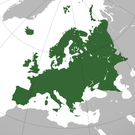An Overview Of Myeloma Treatment Options In Europe – Part 1: Drug Availability

Leading myeloma specialists from across Europe recently published an article in the journal The Oncologist that summarized the current treatment options and availability of therapeutic agents for multiple myeloma patients in Europe. This article, Part 1 in a series, compares availability of the treatments in Europe and the United States. Subsequent articles will summarize the European physicians’ treatment recommendations for newly diagnosed patients, relapsed patients, and management of side effects.
Prior to the introduction of novel therapeutic agents within the last two decades, the treatment options for multiple myeloma patients were rather limited, both in Europe and in the U.S.
Recent clinical trials have demonstrated that these novel agents, particularly thalidomide (Thalomid), Velcade (bortezomib), and Revlimid (lenalidomide), significantly improve response rates in refractory (treatment-resistant) and relapsed myeloma patients. Researchers are also currently investigating thalidomide, Velcade, and Revlimid as first-line therapies for myeloma.
The standard treatment options for myeloma are continuously being challenged and modified based on new research.
Availability Of Myeloma Treatments
The approval status and availability of thalidomide, Velcade, and Revlimid vary, sometimes substantially, between Europe and the U.S.
Many European countries employ a centralized health care system, in which the government can limit the accessibility of a drug. This may prevent patients from receiving some of the treatments, even if they have been approved as safe and effective by the European Medicines Agency (EMEA).
Once a drug is approved for a specific use in Europe (i.e., for relapsed myeloma patients), physicians cannot easily prescribe the drug for other uses (i.e., for first-line therapy), even if there are studies to support the use. In the U.S., however, once a drug is approved by the Food and Drug Administration, physicians can prescribe the drug for other uses, allowing physicians to base treatment decisions on the latest research results.
“Europe is much more bound to the EMEA registration path,” said Dr. Antonio Palumbo, from the University of Torino in Italy. “We cannot prescribe without an okay from the EMEA. Therefore, we need approval before starting maintenance therapy or other strategies.”
Therefore, drug companies often seek approval for use of their drug in the U.S. before Europe. This also means that it is beneficial to conduct clinical trials in the U.S. before other places in the world, making new treatments available to patients in the U.S. much earlier than other countries.
Thalidomide, in combination with melphalan (Alkeran) and prednisone, is currently approved in Europe as a first-line treatment for myeloma patients who have never been treated, are at least 65 years old, or are ineligible for high-dose chemotherapy. In the U.S., thalidomide, in combination with dexamethasone (Decadron), is approved for treatment of newly diagnosed myeloma patients.
Europe has approved Velcade, in combination with melphalan and prednisone, in previously untreated myeloma patients who are ineligible for high-dose chemotherapy with a stem cell transplant. Velcade may also be used as a single therapeutic agent in patients with progressive myeloma who have received at least one prior therapy and have received or are ineligible for transplantation. The U.S., by contrast, has approved Velcade for treatment of all types of myeloma patients.
The approved uses of Revlimid are identical in the U.S. and Europe. Revlimid, in combination with dexamethasone, is approved for myeloma patients who have received at least one prior therapy.
For more information, please read the original article in the journal The Oncologist (abstract).
Related Articles:
- None Found

